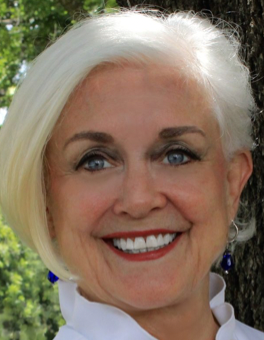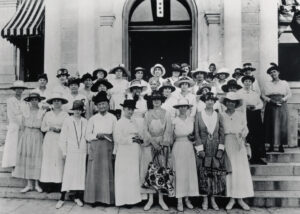Ballots cast in Travis County dropped despite population growth
Texas just wrapped up its most expensive gubernatorial race in history, yet the money didn’t drive voter turnout higher. Statewide only 46 percent of registered voters cast ballots, compared to 53 percent in 2018.
In Travis County, the drop-off was even steeper, from 62 percent to 52 percent. The total number of ballots cast dropped from 486,616 to 462,538, according to data from the Travis County Elections Division.
Austin itself only managed to eke out a slight increase in total ballots cast in the mayoral election—656 more than in 2018. That’s despite an influx of newcomers since 2018 and a competitive mayoral election, which is projected to be the city’s most expensive ever.
“We were seeing an increasing trend of doing better and better with turnout and now it’s possible the trend has ended, sadly,” said former Travis County Clerk Dana DeBeauvoir, who supervised elections in Austin for 34 years before retiring last year.
In an email to supporters, Travis County Democratic Party Chair Katie Naranjo acknowledged, “we didn’t meet our goal to outperform 2018” for turnout. She added, however, “Travis County is the only large urban county to turnout over 50 percent of voters.”

Overall, turnout also fell nationwide, but not in every state. Arizona, Pennsylvania, and Michigan were among the states where turnout exceeded the 2018 total, according to Washington Post analysis of data from the Associated Press and U.S. Elections Project.
One factor in those states was the competitiveness of up-ballot races, which wasn’t the case in Texas this year. “Total turnout is largely, if not entirely, driven by national trends and statewide races, like the Governor’s race. For Texas, I think the lack of competitiveness at the top of the ballot depressed turnout,” said Michael Searle, chief executive officer of Aro Group, a political consulting firm.
Beto O’Rourke lost the governor’s race to Greg Abbott 43.8 percent 54.8 percent, compared to a much narrower margin of 48.3 percent to 50.9 percent when O’Rourke ran for U.S. Senate against Ted Cruz in 2018. O’Rourke’s bid that year fueled Democratic enthusiasm, attracted first-time voters, and boosted voter turnout overall. Now, however, “he’s not the exciting, fresh face he once was,” Brian Smith, a political science professor at St. Edward’s University, told KXAN.

But it wasn’t just the top of the ticket that was less competitive this year. There also weren’t nearly as many hot contests “at the mid-level on the ballot”—races for Congress, State House, and State Senate—according to Matt Mackowiak, chairman of the Travis County Republican Party and president of Potomac Strategy Group.
“Competitive races see more money raised, more money spent, more communication with voters to educate them about the issues and the candidates. So I think broadly speaking, around the state, even though there was far more money raised—particularly by Abbott and Beto—at that mid-level on the ballot there was less money raised, there was less competition, there were fewer targeted seats that were truly competitive.”
Messaging directed at the base
Another reason for low turnout was “the parties were really focused on their bases. They weren’t focused on swing voters,” Mackowiak said. “Republicans highlighted issues like crime and the border and the economy and inflation, Democrats focused on issues like gun control and abortion and climate change…so they were kind of talking to their own bases and not really getting independent swing voters motivated, turning them out.”
That dynamic may have favored Republicans, according to Jamarr Brown, executive director of the Texas Democratic Party and other strategists interviewed by the Texas Tribune. Brown wrote in an internal memo that the party had fallen short in its messaging on key issues of importance to swing voters, including the economy and border security. “We as Texas Democrats can no longer be seen as sticking our heads in the sand on issues that poll after poll tell us Texans care deeply about,” he wrote, as reported by the Tribune.

But would that explain a drop-off in voter turnout in deep-blue Travis County?
DeBeauvoir, a long-time Democrat, said she thought voters in the county—which is overwhelmingly Democratic—were more discouraged than apathetic. “I think there was a hopelessness about it,” she said.
She gave the example of the race for Texas Attorney General, which incumbent Ken Paxton won 54 percent to 42.7 percent, in spite of the being under indictment for securities fraud and facing a whistleblower lawsuit for firing his top deputies after they reported him to law enforcement for allegedly illegal conduct.
“Uvalde of all places went 60 percent for Abbott. What kind of state is this? And I think the people in Travis County think we can do nothing about this. It wasn’t apathy, it was reality.”
Cynicism and polarization
But according to Searle, many Austinites have checked out from local politics too, even though those are races they can influence more easily. “What we saw in the field was a lack of engagement in local races. As an example, in some neighborhoods in District 1 and District 5, we saw 75 percent of voters still uninformed or undecided about their choice for city council late in early voting.”
Searle ran field operations this election for the political action committee Restore Leadership ATX. The PAC backed Misael Ramos in District 1, who was challenging incumbent Natasha Harper-Madison, and Aaron Velazquez Webman in District 5, who was seeking an open seat. The PAC knocked on more than 50,000 doors and talked with nearly 10,000 voters. Almost 60 percent of those voters said they were undecided.

“Many people don’t even know which district they live in. This was much higher than I have seen since Austin moved to 10-1,” said Searle, who served as council aide to Republican Ellen Troxclair, who was elected to District 8 in 2014.
As to why voters were so disengaged, Searle offered several explanations. In the first place, most people get their news from national publications that don’t cover local races. Secondly, people are busy with their lives and “they don’t have the time to research and educate themselves on every race on the ballot.”

Lastly, Searle believes that voters increasingly are cynical about politics at all levels. “Most people are put off by politics. They know it is corrupt and it doesn’t serve them. They don’t like it, they don’t want to talk about it. It is incredibly polarized and nasty, and it is lacking of any real substance. So, they stay away from it.”
On the other hand, DeBeauvoir faults the national political discourse and social media more so than cynicism about local government. “I think the intimidation factor of just the threats of violence at the polls have an impact…there was talk of threatening and ugly behavior that we were going to see at the polling places.”
The former election official also thinks that Election Code changes made by the legislature in 2021 contributed to lower turnout. For example, “The rules about mail voting were meant to confuse people. The by-mail voting was a tedious complicated process… It was hard enough as it was and they just made it worse,” she said.
On a more positive note, DeBeauvoir noted that some of the worst fears of elections administrators did not materialize this cycle. “One of the reasons is election administrators were out ahead of this all over the country. They taught their people de-escalation techniques for the polling places and the counting stations, they trained their local responders—police and sheriffs—on exactly what in the criminal code would apply, so that when they came out they knew where their authority was and what actions they could take.”
“There was a lot of that education around the whole United States. And then finally, I do think there’s a human nature thing where it’s easier to be bullying and ugly to people online and that really does unravel and come apart when you’re face to face.”
“I think the fear tactics were successful and kept some people away, but I think ultimately the biggest and baddest fears never materialized.
Super precinct strategy
Looking toward the next presidential election, the Travis County Democratic Party plans to invest further in voter turnout efforts, drawing on lessons learned from the adoption this year of a “super precinct model” of organizing.
The strategy seeks to integrate the effort of party precinct leaders with those of nonprofit organizers, community leaders, and Democratic clubs, such as Pflugerville Democrats, Austin Tejano Democrats, and Blue Action Democrats.
“We invested in partnerships and the super precinct model,” wrote Naranjo, the party chair, in an email November 11th. “…TCDP intentionally met with precinct chairs for over a year to build the super precinct model and then deploy voter outreach efforts via our super precincts.”
She added, “What we’ve learned is investing in community organizing is the key to breaking trends, turning out Democrats and being good stewards of our democracy.”
For its part, the Travis County GOP focused on supporting its candidates with training, volunteers, and voter targeting. “With the resources we have we focus on swing voters and low-propensity Republicans. Because that’s where you can have the biggest margin and try to begin to make a difference,” said Mackowiak
Both Mackowiak and DeBeauvoir said the next presidential election in 2024 would bring higher turnout, and that the lower turnout this year doesn’t necessarily represent a trend.
“Mid-terms are always highly variable elections in terms of turnout. Each mid-term is its own creature, they’re all unique,” said Mackowiak. “Presidential cycles are far more predictive.”
DeBeauvoir said, “We’re headed now into the upward part of the four-year cycle of elections. The constitutional amendment election won’t have much of a turnout. But then we’ll head into the presidential election and turnout will be probably very high again.”

Trust indicators: Bulldog reporter Daniel Van Oudenaren is a journalist with 13 years experience in local, state, and international reporting.
Related Bulldog coverage:
Bolstering confidence and participation in Travis County elections, November 19, 2022
Watson grabbed 70 percent of mayoral donations, November 3, 2022








“Useful Idiots”
In case you are unfamiliar with the term “Useful Idiots” please look it up!
If you are, or were, one of the “Undecided Voters” out there, in either our local or Federal elections and at the last minute just ended up voting Democrat because that is way you or your family has always voted………good job!
You have, out of your inexcusable ignorance just moved Austin and America one step closer to the new Democrat parties’ vision for America. In case you’ve been asleep, their new vision for America is Socialism, Marxism, Communism, and Globalism. These ideologies are now synonymous with the new, so-called Democrat Party, more correctly stated, Democrat regime. To keep it simple, the final ideology that will be adopted for America will be Communist-Globalism. There is no difference between Socialism, Marxism, Communism, and Globalism……………remember that!
Unbeknown to you Democrat voters, there are numerous local, and World NGOs comprised of individuals living in our communities, living in America, running for political office and, around the World that hate America, its Constitution, its freedoms, its God given rights, and its prosperity.
For those of you that care about America and the rights and freedoms it affords you, at this point in time, please do some research on what is actually going on in America right now under this new Democrat regime. And, compare it to what the United Nations, the World Health Organization, the World Economic Forum, the World Bank, including George Soros, Klaus Schwab, Justin Trudeau, just to name a few, to learn what these individuals and NGO’s have in store for you, me and America in the very near future.
Remember that these individuals and NGO’s know far better than you do how you should lead your lives and what rights and freedoms you should and shouldn’t have………you will conform!